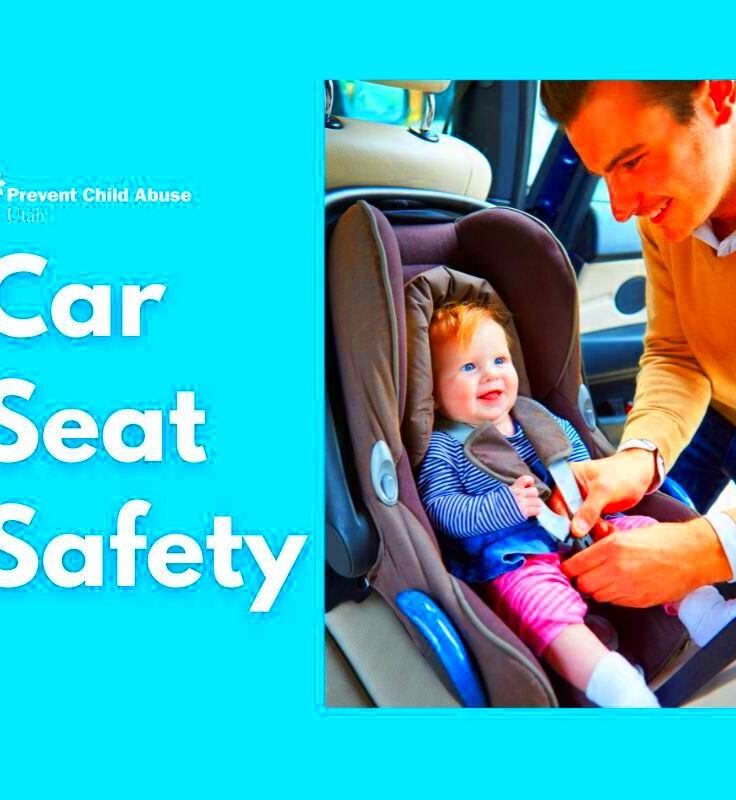Utah Law for Car Seats and Child Passenger Safety
Utah has specific laws in place to ensure the safety of children when traveling in vehicles. These laws aim to reduce the risk of injury or death in the event of an accident. It’s crucial for parents and caregivers to be aware of these regulations to protect their little ones. By understanding these laws, you can ensure compliance and enhance the safety of your child during every car ride.
Types of Car Seats Required
In Utah, there are different types of car seats designed for children based on their age, weight, and height. Knowing which one to use is essential for keeping your child safe. Here’s a breakdown of the types:
- Infant Car Seats: Designed for newborns and infants, these seats should be used until your child reaches 22 to 35 pounds, depending on the model.
- Convertible Car Seats: These can be used as both rear-facing and forward-facing seats. They’re suitable for children from birth up to 65 pounds.
- Booster Seats: Used for older children who have outgrown their convertible seats but are not yet tall enough to use a seat belt alone. Booster seats are generally for children aged 4 to 12 years and up to 100 pounds.
- Seat Belts: Once your child is at least 8 years old or over 57 inches tall, they can use a seat belt without a booster seat.
Age and Weight Requirements for Car Seats
Utah law outlines specific age and weight requirements for using car seats to ensure every child’s safety. Here’s a quick reference table:
| Car Seat Type | Age | Weight |
|---|---|---|
| Infant Car Seat | Birth to 1 year | Up to 35 pounds |
| Convertible Car Seat | Birth to 2 years (rear-facing) | Up to 65 pounds |
| Forward-Facing Car Seat | 2 to 4 years | 20 to 65 pounds |
| Booster Seat | 4 to 12 years | 40 to 100 pounds |
| Seat Belt | 8 years and older or over 57 inches tall | Weight varies |
Following these guidelines helps ensure that children are securely strapped in, minimizing the risk of serious injury in a crash. Always check the manufacturer’s recommendations for your specific car seat model to ensure proper usage.
How to Properly Install a Car Seat
Installing a car seat correctly is crucial for ensuring your child’s safety on the road. Many parents might find it overwhelming, but with the right steps, it can be a straightforward process. Here’s a guide to help you install a car seat properly:
- Choose the Right Location: Always place the car seat in the back seat, preferably in the center position. This area is generally the safest in case of an accident.
- Read the Manual: Both the car seat and vehicle come with manuals. Familiarize yourself with the instructions specific to your model.
- Secure the Seat: Use either the seat belt or the LATCH (Lower Anchors and Tethers for Children) system to secure the car seat. If using the seat belt, ensure it’s locked and snug.
- Check for Movement: After securing, try to wiggle the car seat. It should not move more than an inch side to side or front to back.
- Adjust the Harness: Make sure the harness straps are at or above your child’s shoulders. The straps should be snug but not overly tight, and the chest clip should be at armpit level.
Following these steps will ensure that your car seat is installed correctly, providing your child with the best protection possible during car rides.
Common Mistakes Parents Make with Car Seats
Even the most well-intentioned parents can make mistakes when it comes to car seat safety. Here are some of the most common errors to watch out for:
- Incorrect Installation: Many parents either fail to secure the seat tightly enough or overlook the correct installation method.
- Using an Expired Car Seat: Car seats have expiration dates, and using one past this date can compromise safety.
- Forward-Facing Too Soon: Transitioning from a rear-facing seat to a forward-facing seat before the child meets the weight and age requirements is risky.
- Loose Harness Straps: Straps should be snug against the child’s body, and the chest clip should be positioned correctly.
- Neglecting to Check for Recalls: Car seats may be subject to recalls. Always stay updated on safety notices.
Avoiding these common mistakes will significantly enhance your child’s safety while traveling. Regularly review your car seat’s installation and guidelines to ensure maximum protection.
Exceptions and Special Cases in Utah
While Utah has clear laws regarding car seat usage, there are exceptions and special cases to consider. Understanding these can help you navigate unique situations:
- Medical Exemptions: Some children with medical conditions may require special seating arrangements. A note from a doctor can help clarify these needs.
- Vehicles Without Back Seats: In rare cases, if a vehicle lacks a back seat, a child can ride in the front seat, but they must be in an appropriate car seat or booster seat.
- Temporary Caregivers: If a child is being transported by a temporary caregiver, the same car seat laws apply, but it’s essential for the caregiver to know how to install and use the seat correctly.
- Rideshares and Taxis: For ridesharing services, drivers are not required by law to provide a car seat. It’s the parent’s responsibility to ensure their child is in a safe seat during these rides.
Staying informed about these exceptions can help you make safer choices for your child while ensuring compliance with state laws.
Resources for Parents on Child Passenger Safety
As a parent, ensuring your child’s safety during car rides can feel overwhelming. Luckily, there are many resources available to help you understand child passenger safety better. These resources can provide valuable information, tips, and support to ensure you’re making the best decisions for your little ones.
- Utah Department of Public Safety: Their website offers comprehensive information on car seat laws and safety tips for parents. You can find guidelines tailored specifically for Utah residents.
- National Highway Traffic Safety Administration (NHTSA): The NHTSA provides resources on how to choose and install car seats properly. They also have a car seat finder tool that helps you select the right seat based on your child’s age and size.
- Safe Kids Worldwide: This organization offers free car seat checks and events in various locations. They also provide educational materials on keeping children safe in vehicles.
- Local Hospitals and Clinics: Many hospitals offer car seat education programs or inspections. Contact your local hospital to see if they have any resources available.
- Online Forums and Communities: Websites and social media groups dedicated to parenting can be great places to ask questions and share experiences with other parents.
By utilizing these resources, you can feel more confident in your knowledge of child passenger safety and make informed choices for your family.
Recent Changes to Utah Car Seat Laws
Staying updated on car seat laws is essential for any parent or caregiver. Recent changes to Utah’s car seat laws reflect ongoing efforts to enhance child safety in vehicles. Here are some important updates you should be aware of:
- Rear-Facing Requirements: The law now emphasizes keeping children in rear-facing car seats until at least age two, or until they exceed the seat’s weight or height limits.
- Booster Seat Usage: Children must remain in booster seats until they are at least eight years old or reach 57 inches tall. This change aims to reduce the risk of injury for older children.
- Enforcement of Laws: Law enforcement agencies are now required to educate parents on proper car seat use when issuing citations, making it easier for parents to understand their responsibilities.
- Increased Penalties: Fines for not using the proper car seat have increased, emphasizing the importance of compliance with safety regulations.
These changes aim to ensure that children are as safe as possible while traveling. Make sure to review your car seat and its compliance with the latest laws.
Frequently Asked Questions
As parents and caregivers navigate the complexities of child passenger safety, it’s common to have questions. Here are some frequently asked questions that may help clarify some concerns:
- What is the safest type of car seat? The safest type depends on your child’s age and size. Generally, a rear-facing seat is recommended for infants and toddlers, while older children may need a booster seat.
- How do I know if my car seat is installed correctly? After installation, check for movement. The car seat should not move more than an inch side to side or front to back. Additionally, the harness should fit snugly against your child’s body.
- When can my child switch to a booster seat? Your child can switch to a booster seat once they outgrow their forward-facing car seat, typically around age four and at least 40 pounds.
- What should I do if I can’t afford a car seat? Many local organizations and charities provide assistance or free car seats for families in need. Check with your local health department or non-profit organizations.
- How often should I replace a car seat? Replace a car seat after any moderate or severe crash, and also check the expiration date, which is usually six to ten years from the date of manufacture.
Addressing these questions can help ensure that you are well-informed and prepared to keep your child safe while traveling.
Conclusion
In summary, understanding Utah’s car seat laws and child passenger safety is vital for protecting our little ones while traveling. By following the state’s guidelines on car seat types, age, and weight requirements, and by installing car seats correctly, parents can significantly reduce the risk of injury in case of an accident. It’s essential to stay informed about recent changes in the law and to utilize available resources for guidance. Remember to avoid common mistakes and to be aware of any exceptions that may apply. Ultimately, prioritizing safety will ensure that every journey is a safe one for our children.


